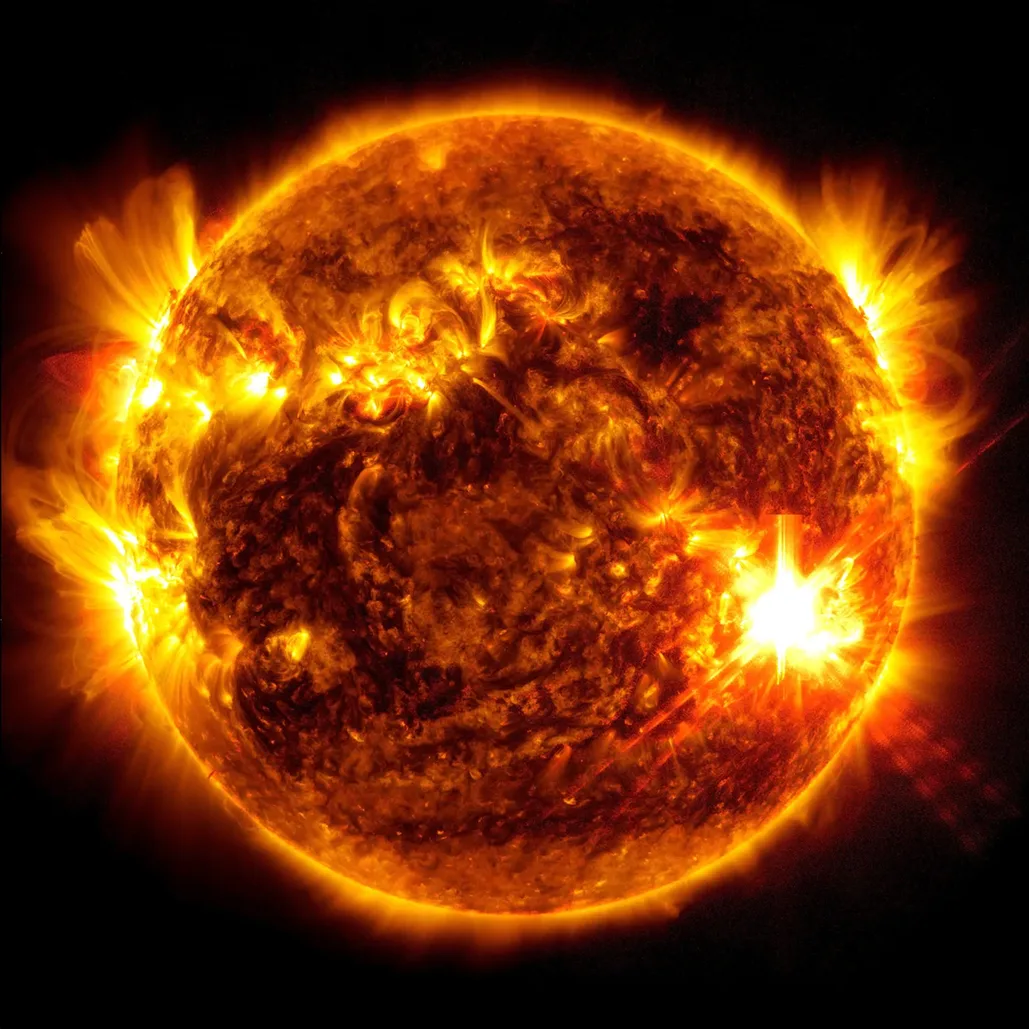Published: May 22, 2025
NASA has released an important alert about increased solar activity, warning that a powerful solar storm could affect Earth soon. This comes after the detection of the year’s strongest solar flare—an X2.7-class event—recorded on May 14, 2025, by NASA’s Solar Dynamics Observatory. The flare originated from sunspot AR4087, the Sun’s most active region, and has already caused temporary disruptions to high-frequency radio communications in parts of the Middle East.
What Is a Solar Storm?
Solar storms are disturbances in Earth’s magnetosphere caused by solar wind and magnetic fields. Solar storms occur due to solar flares—powerful bursts of radiation—and coronal mass ejections (CMEs), which are large eruptions of solar wind and magnetic fields expelled from the Sun’s corona. When these charged particles interact with Earth’s magnetic field, they can trigger geomagnetic storms that cause a range of disturbances.
Potential Impacts on Earth
The recent X2.7-class solar flare has already led to a 10-minute period of degraded communications for high-frequency radio systems in the Middle East. As the flare’s effects propagate, scientists anticipate potential disruptions to GPS signals, satellite communications, and power grids. Additionally, the storm may enhance auroral activity, leading to vivid displays of the Northern and Southern Lights at latitudes where they are typically not visible.
Ongoing Solar Activity
After the X2.7 flare, sunspot AR4087 emitted two more solar flares—a moderate M5.3 and a more powerful M7.74—within a single day, signaling continued solar unrest. Scientists are closely monitoring these developments, as the Sun’s rotation brings this active region into direct alignment with Earth, raising the possibility of more intense solar flares.
NASA’s Monitoring Efforts
NASA, in collaboration with the National Oceanic and Atmospheric Administration (NOAA), continues to monitor solar conditions and issue alerts as necessary. The agencies are working to improve space weather forecasting capabilities to provide earlier warnings and better prepare for potential disruptions. However, challenges remain in predicting the orientation of a solar storm’s magnetic field, which can significantly influence its impact on Earth.
Recommendations for the Public
While the immediate risk to Earth’s infrastructure remains low, NASA advises the public to stay informed about space weather conditions, especially those in high-latitude regions where auroras may become visible. Individuals and organizations that rely on satellite communications, GPS systems, or high-frequency radio communications should be aware of the potential for temporary disruptions. As solar activity continues to increase during the solar maximum period, it is essential to remain vigilant and prepared for possible impacts on technology and communication systems





